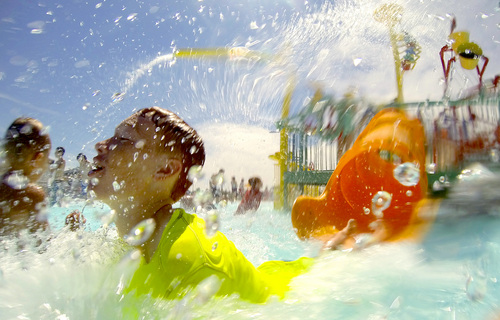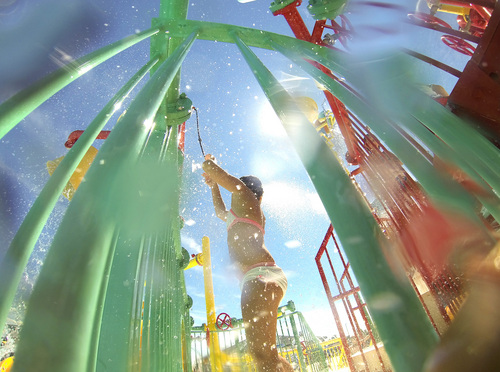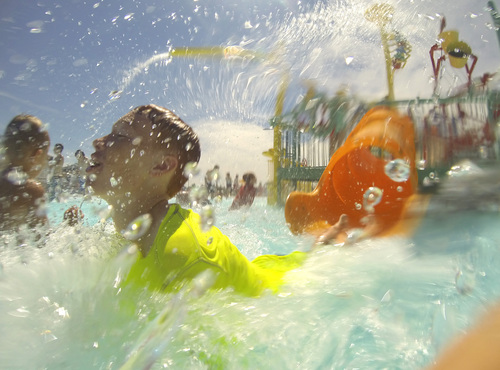This is an archived article that was published on sltrib.com in 2014, and information in the article may be outdated. It is provided only for personal research purposes and may not be reprinted.
Salt Lake City topped 100 degrees for the first time in 2014 on Monday, with the airport high of 103 nearly hitting the day's record — one degree higher — set in 2007.
And as Utah heats up, residents need to think about more than just ways to cool down — risks from wildfire, air pollution and wider use of lakes, reservoirs and rivers also increase.
Hot and dry conditions combined with human error can be dangerous, and there seem to be more abandoned campfires and more people using fireworks this summer, said Jason Curry, a spokesman for the Division of Forestry, Fire and State Lands.
"It is super, super hot and dry and we have seen some really easy ignitions," Curry said. "We have gotten off pretty well this summer, but we are to the point where lightning fires are going to become more common and we need people to do their part to prevent other types of fires."
Roughly half of the state is already under fire restrictions and more could be added if the dry conditions continue, Curry said.
Many of the abandoned campfires were in developed campgrounds where people feel a "false sense of security," he said. There have been some close calls with small fires started by fireworks near homes this summer.
"There are a lot of young men and women out there responding to these fires and it is very dangerous," Curry said. "Nobody wants to be the one on the end of the spark or firework that starts a fire and puts them, or homes, at risk."
Officials at Arches National Park reported via Facebook that park rangers responded to four heat-related medical emergencies during a two-hour window on Sunday. On Monday, temperatures there reached 102. Rangers encourage visitors to drink plenty of water and to avoid hiking during the hottest time of the day — noon to 4 p.m.
Water is a popular way to cool down and many people head to Utah State Parks to go boating and swimming.
"With the upcoming state holiday and many people on vacation, we expect the parks will be busy," said Utah State Parks spokesperson Hollie Brown. "Remember to wear life jackets, obey waterway markers and stay at least 150 feet away from other boaters and personal watercraft users."
Brown also reminds boaters and swimmers that drinking alcohol can make these activities more dangerous.
The Utah Division of Air Quality determined there was "yellow" or compromised air quality for most of the state Monday, including Salt Lake, Davis, Weber and Utah counties. Cache, Washington, Carbon, Duchesne and Uintah counties were the only regions with "green" or healthy status.
Ozone levels, which can inflame respiratory tissues, can increase when the air becomes hot and stagnant.
"We're in a good holding pattern to keep us at the moderate voluntary action range," said Utah Department of Environmental Quality spokesperson Donna Spangler. "It occasionally hits the 'unhealthy for sensitive [people]' areas, but we have enough wind that keeps us well mixed."
Spangler encouraged people to help keep the air clean by taking transit, carpooling, avoiding idling and limiting driving.
The Intermountain Allergy & Asthma website listed only mold at "high" on its pollen index, while all other allergens were graded as "low" on Monday.
Temperatures are expected in the high 90s for Salt Lake City on Tuesday. The National Weather Service expects higher temperatures in the south, where the high on Tuesday is expected to top 102, after Monday's high of 104 degrees at Zion National Park.
The forecast calls for some relief from thunderstorms and rain showers on Tuesday — in the evening for northern Utah, and periodically through the day in Utah's Dixie.
For more information, check the Tribune's weather page at sltrib.com/weather.











